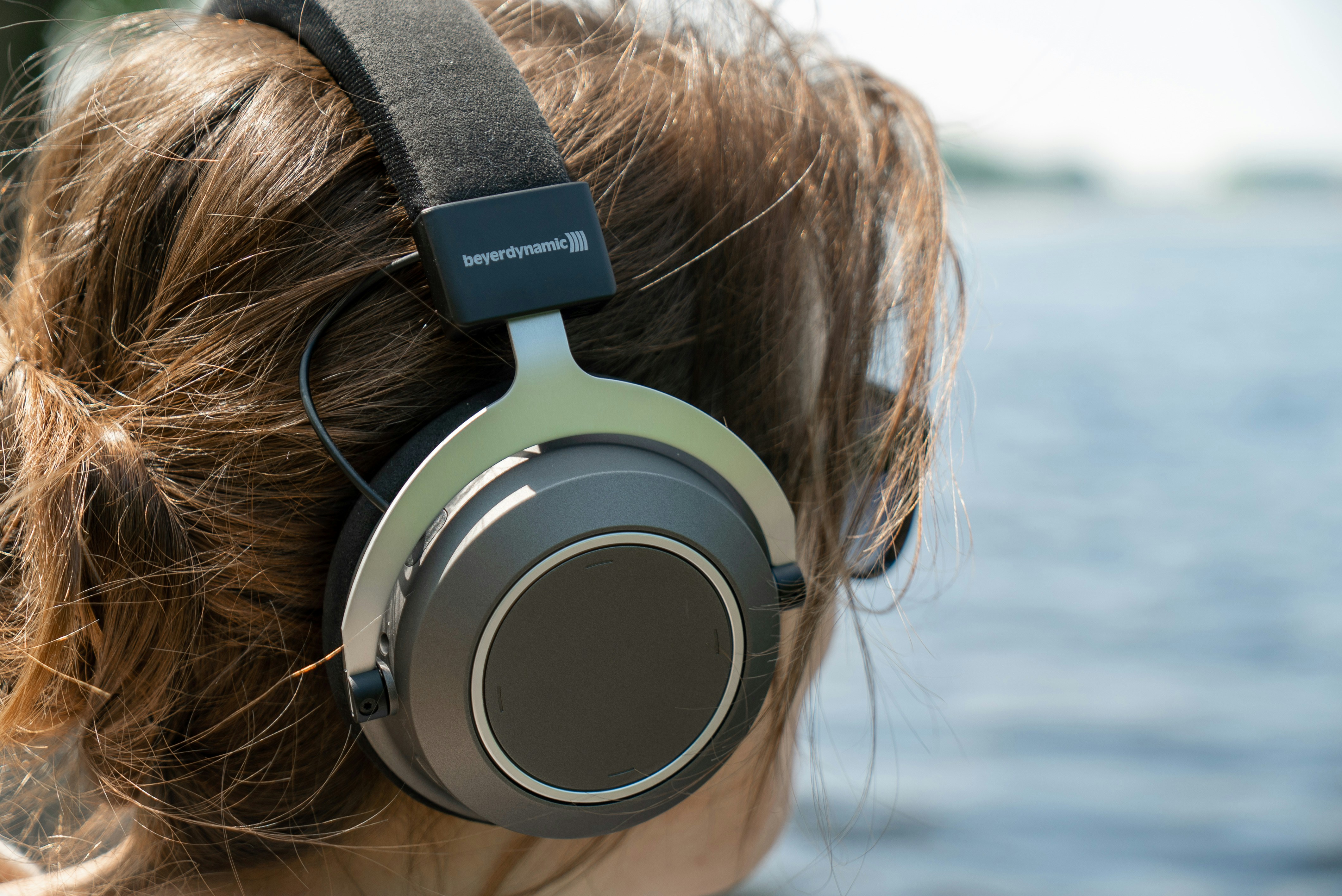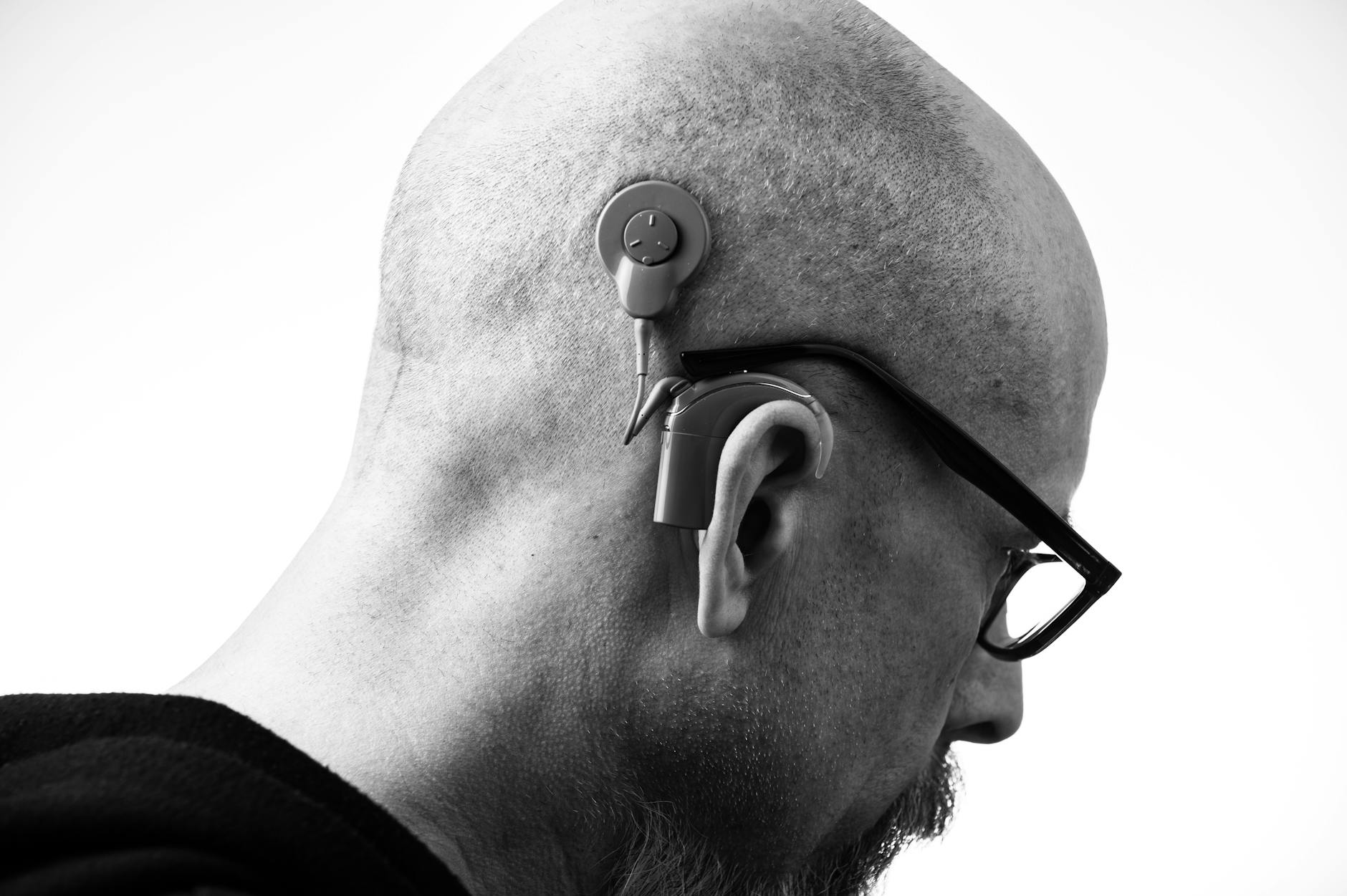If you leave meetings exhausted, dread open offices, or worry you’re missing details on video calls, you’re not alone—and you’re not the problem. Workplaces are built for speed and sound, not listening effort. With the right tools, small room changes, and a clear plan, you can make your job far easier on your ears and your brain.
Why work makes hearing harder (even with good hearing aids)
Most jobs push the limits of our auditory system: open-office noise, soft talkers, fast turn-taking, poor microphones, masks, and video platforms compressing audio. Even people with typical hearing report listening fatigue at work. Add hearing loss or tinnitus, and that load multiplies.
Here’s what stacks the deck:
- Competing noise: HVAC hum, keyboards, and side conversations all mask speech.
- Distance and direction: Speech clarity drops sharply with distance, especially for high-pitch sounds crucial to understanding consonants.
- Reverberation: Hard surfaces bounce sound, smearing speech cues.
- Video calls: Network compression flattens natural speech cues; people talk over each other.
- Fast information flow: No visual cues or summaries; rapid topic shifts; acronyms.
The good news: There are proven ways to lower the listening load and raise clarity—without asking people to shout.
Know your rights (and how to use them)
In many countries, disability and employment laws require employers to provide reasonable accommodations for hearing loss (e.g., the Americans with Disabilities Act in the U.S., the Equality Act in the U.K.). You don’t need to disclose intimate medical details—just what you need to do the essential parts of your job.
Common reasonable accommodations
- Captioning for meetings, trainings, and videos (live captions or CART).
- Remote microphones or table mics you can connect to hearing aids or a receiver.
- Assistive listening systems in conference rooms (hearing loop/telecoil, FM/DM, infrared).
- Quiet workspace or room treatments (panels, carpets, door sweeps) to reduce reverberation.
- Seating adjustments (up front, good lighting for lip cues).
- Written follow-ups: agendas in advance, summaries after.
- Headset or speakerphone compatible with your hearing aids.
Tip: Frame requests around job performance and efficiency. “Live captions help me capture technical terms accurately and reduces rework.” Consider looping in HR or a disability resource group. An audiologist can write a brief support letter describing your functional needs (e.g., speech-in-noise challenges) without revealing diagnoses.
Quick wins you can try this week
Meetings
- Ask for an agenda and shared slides before the meeting. Review key terms.
- Choose a seat with your better ear toward the main speaker and your back to noise sources.
- Request a “one person speaks at a time” norm and a pass-the-mic rule in larger rooms.
- Turn on live captions (Zoom, Microsoft Teams, Google Meet) and record a transcript when appropriate.
- Confirm decisions out loud and in chat: “So we agreed on X by Friday—yes?”
Video calls
- Use a wired or high-quality Bluetooth headset; set mic near your mouth and away from vents.
- Enable noise suppression for your microphone and encourage others to do the same.
- Pop out captions and enlarge them; slow the meeting pace by using hand-raise features.
- If your hearing aids stream audio, set a stable program with your audiologist and practice switching quickly.
One-on-ones
- Pick quieter spaces with soft furnishings. Face each other; avoid backlighting.
- Ask for a quick written recap: “Could you email the top three action items?”
- Use a clip-on remote microphone if the speaker is soft or masked.
Tech that changes the game
The right technology can cut listening effort dramatically. Many options work with or without hearing aids.
For hearing aid users
- Directional programs: Ask your audiologist to create office and meeting programs with optimized directionality and noise reduction. A dedicated “table talk” program can widen pickup for group discussions.
- Remote microphones: Clip-on (for one talker), table array mics (for groups), or beamforming mics you can point at the current speaker. These send cleaner speech directly to your hearing aids.
- Streaming and connectivity: Pair aids to your work devices. If you switch between laptop and phone often, practice swapping connections or use a Bluetooth transmitter that can hand off audio smoothly.
- Telecoil/hearing loop: If your conference rooms have loops, a telecoil program delivers clear, low-latency audio from the room system to your aids. Ask facilities or look for the “T” ear symbol.
- Real Ear Measurement (REM): Ensure your aids are verified for your prescription in real ears. Verification can improve speech audibility and comfort, especially in noisy settings.
If you don’t wear hearing aids
- Over-ear headsets with good passive isolation and clear mic. Try both mono (one ear open for situational awareness) and stereo (better clarity) to see which reduces effort.
- Captioning apps and services: Built-in captions on video platforms or standalone apps for in-person conversation. Keep a simple, private setup ready on your phone.
- Personal amplifiers: Discreet, pocket-sized devices with a lapel mic can boost a single talker in a noisy space.
Captioning: your new superpower
- Turn on live captions by default for virtual meetings. Save transcripts when permissible.
- For high-stakes events, request CART (Communication Access Realtime Translation) with a trained captioner for better accuracy.
- For pre-recorded training, ask for accurate captions (not auto-generated only) and a transcript.
Make rooms work for listening
You don’t need a full renovation to improve speech clarity.
- Soften the room: Add rugs, curtains, acoustic panels, upholstered chairs, and bookshelves.
- Reduce background noise: Close doors, fix rattling vents, add door sweeps, choose quieter equipment.
- Microphone etiquette: Always use the mic—even for questions. “If it’s not on the mic, it’s not in the room.”
- Lighting: Ensure faces are well-lit for speechreading; avoid backlit speakers.
Facilities teams often appreciate specific, low-cost asks. A simple pilot (panels in one room, a table mic trial) can demonstrate big benefits for everyone, not just people with hearing loss.
Build your personal communication plan
You don’t have to reveal everything about your hearing. You can share just what helps the team communicate efficiently with you.
Simple scripts
- To a new manager: “I hear best when one person speaks at a time and when captions are on. A quick summary after meetings helps me confirm key details.”
- To a meeting host: “Could we enable live captions and stick to the pass-the-mic rule? It helps everyone capture details.”
- To a soft-spoken colleague: “Would you mind clipping this small mic? It streams your voice clearly so I don’t miss you.”
Your meeting access checklist
- Agenda and materials in advance
- Live captions on; transcript saved if appropriate
- Remote mic paired and charged
- Seat choice and lighting set
- Action items confirmed verbally and in writing
Keep your checklist on your desk or pinned to your calendar invite.
Partner with your audiologist like a performance coach
Bring your job to your hearing appointment—literally. Describe your spaces, typical noise, and communication demands. Ask about:
- Speech-in-noise testing to quantify challenges and track progress.
- Real Ear Measurement to verify audibility for soft, average, and loud speech.
- Custom programs for office, meetings, streaming, and “table talk.”
- Pairing and training on remote microphones or room systems (loop/FM/DM).
- Streaming levels and equalizer tweaks for clearer calls.
- Earwax management, earmold comfort, and retention for long wear days.
- Noise conservation if part of your job is loud (e.g., manufacturing, events).
If your hearing changes, you notice more tinnitus, or your aids feel less effective, schedule a visit. Small adjustments can make big differences during your workweek.
If your job is noisy: protect performance and hearing
Exposure to loud sounds over time can worsen hearing and tinnitus. Many workplaces offer hearing conservation programs.
- Know your levels: If you have to raise your voice at arm’s length, it’s likely above safe levels.
- Use high-quality protectors: Properly fitted earplugs or earmuffs; consider level-dependent electronic protectors that allow speech while limiting peaks.
- Fit-testing: Ask for or invest in fit testing to verify real-world protection.
- Double protection for very loud tasks (earplugs + earmuffs).
- Take quiet breaks and rotate tasks to reduce cumulative exposure.
Ask an audiologist or occupational health provider to tailor protection that safeguards hearing without compromising communication or safety.
Manage listening fatigue
Fatigue isn’t a personal failing—it’s biology. Listening with hearing loss recruits extra brainpower. Even short changes help:
- Schedule recovery windows after long meetings.
- Batch high-listening tasks earlier in the day when you’re freshest.
- Use text-based updates for non-urgent issues.
- Practice brief mindfulness or breathing exercises between calls.
Your first 30 days: a practical roadmap
- Week 1: Audit your workday. Where do misunderstandings or fatigue spike? List environments, people, and tasks.
- Week 2: Implement quick wins. Turn on captions, adjust seating, share your simple script with teammates.
- Week 3: Trial technology. Borrow or trial a remote mic; ask facilities about room systems; test headset options.
- Week 4: Formalize accommodations. Document what worked, meet with HR/manager, and involve your audiologist for support.
Common pitfalls (and easy fixes)
- Turning up volume instead of improving clarity: Prioritize microphones, captions, and room acoustics.
- Relying on memory when you’re tired: Write it down; confirm in the moment.
- Not practicing with new tech: Rehearse mic pairing and program switching before high-stakes meetings.
- Waiting for a perfect solution: Start with one change that lowers effort today.
When to loop in more support
- Audiologist: Device verification, custom programs, assistive tech guidance.
- ENT specialist: If you have ear pain, sudden changes, persistent dizziness, or drainage.
- Occupational health/vocational rehab: Help aligning accommodations with job demands.
- Speech-language pathologist/auditory training: Build listening strategies and confidence.
You deserve a workday that doesn’t drain you just to keep up. A few targeted changes can transform how you hear—and how you feel—at work. If you’re unsure where to start, make an appointment with an audiologist and bring this article along. Together, you can design a plan that fits your job and your ears.
Frequently Asked Questions
Do I have to tell my employer I have hearing loss to get accommodations?
You don’t have to share a diagnosis, but you generally do need to disclose that you have a hearing-related limitation and describe what helps you perform essential job functions (e.g., live captions, a remote mic, a quieter workspace). HR can guide the process, and an audiologist can provide a brief support letter describing functional needs without medical details.
What headset works best with hearing aids for video calls?
If your hearing aids stream directly, set a stable streaming program with your audiologist and use your aids as the headset. If not, over-ear (circumaural) headsets that fully cover the aids often reduce feedback and improve clarity. Avoid placing on-ear pressure over microphones. Test both mono and stereo modes; stereo often improves speech clarity, but mono can help with awareness of your surroundings.
How can I handle meetings with masks or soft-spoken colleagues?
Use a clip-on remote microphone for the primary speaker, sit closer with your better ear facing them, and ask for live captions. Request that speakers face the group when talking and summarize key decisions in writing. If masks are required, clear-window masks can restore some visual cues.
What if my employer says no to accommodations?
Start by reframing the request around job performance and low-cost options (e.g., turning on captions, using a table mic, basic room softening). In many countries, employers must provide reasonable accommodations unless it causes undue hardship. HR or a disability coordinator can reassess, and you can consult an audiologist for specific recommendations. If needed, seek guidance from a workplace accommodation resource or legal advisor in your region.
References
- NIDCD: Assistive Devices for People with Hearing, Voice, Speech, or Language Disorders
- CDC NIOSH: Occupational Hearing Loss
- Job Accommodation Network (JAN): Accommodation Ideas for Hearing Loss



